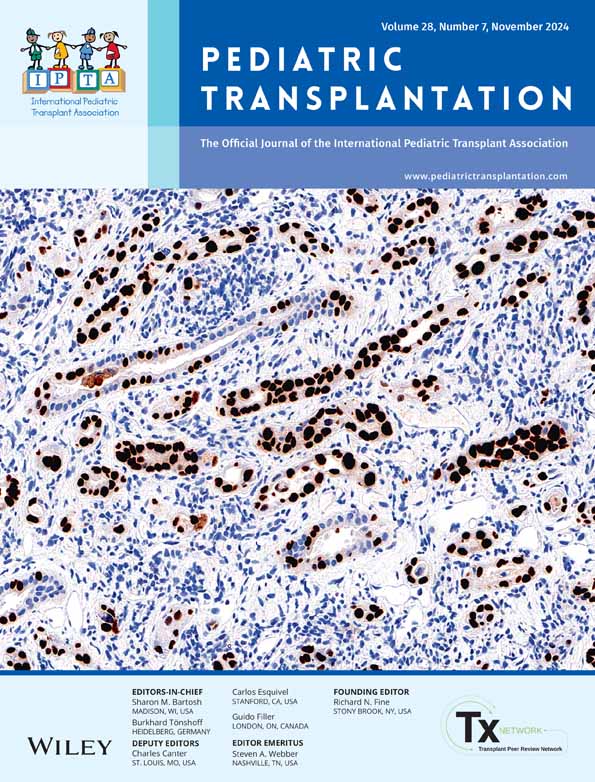Liver Transplantation for Nijmegen Breakage Syndrome With Hepatic Malignancy and Hepatopulmonary Syndrome After Bone Marrow Transplantation: A Case Report
Funding: The authors received no specific funding for this work.
ABSTRACT
Background
Nijmegen breakage syndrome (NBS) is an autosomal recessive DNA repair disorder that manifests through increased genomic instability, malignancy, and cellular and humoral immunodeficiencies. The prognosis for NBS patients is poor due to their increased susceptibility to fatal infections and lymphoproliferative malignancies. Currently, there is no specific treatment for NBS, though allogeneic hematopoietic stem cell transplantation (HSCT) has been performed and documented as case series to demonstrate the utility of transplantation.
Methods
A 14-year-old girl with NBS and haploidentical HSCT from her older brother due to recurrent lung infection was referred for liver transplantation (LT) due to liver cirrhosis, hepatopulmonary syndrome (HPS), and suspicion of liver malignancy. It was decided to perform LT using the living donor who had previously donated for HSCT.
Results
Living donor left lobe LT was successfully performed from her brother. The patient experienced no complications in the early postoperative period and was discharged on the seventh postoperative day. Pathological examination of extracted liver has shown “intermediate cell carcinoma” in two foci. After 1 year LT, the patient has had an uneventful course in terms of LT complications and infection, with minimal immunosuppression.
Conclusions
NBS patients have an increased prevalence of malignancies, including primary hepatic malignancy, but most are managed medically or with limited resections. Transplantation in these patients can be curative for hepatic malignancy with a favorable safety profile.
Conflicts of Interest
The authors declare no conflicts of interest.
Open Research
Data Availability Statement
The data that support the findings of this study are available from the corresponding author upon reasonable request.




